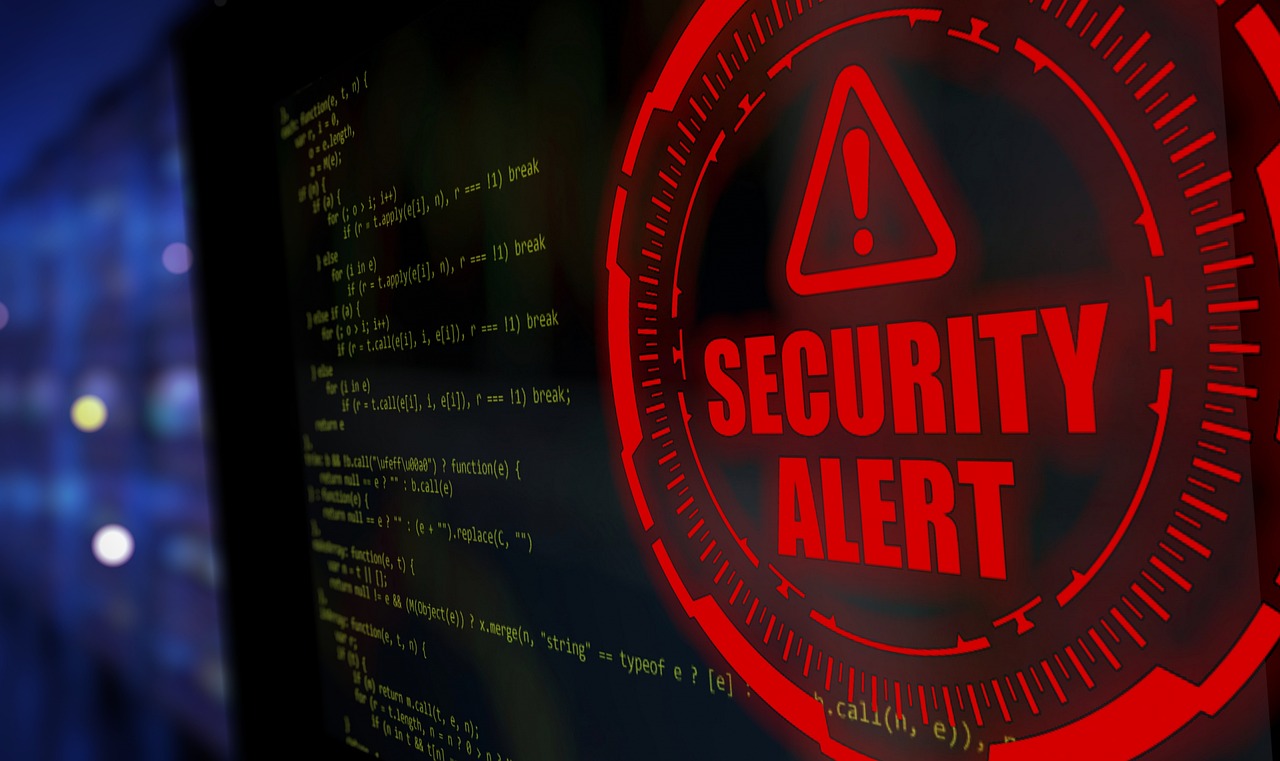What Is Cyber Risk Assessment?
Imagine a world where businesses and individuals can navigate the digital landscape with confidence, knowing exactly how to protect themselves from potential cyber threats. That’s where cyber risk assessment comes into play. But what exactly is it? Simply put, cyber risk assessment is the process of evaluating and analyzing an organization’s vulnerabilities and potential risks in the digital world. It involves identifying potential threats, understanding their impact, and implementing effective strategies to mitigate any potential damages. In this article, we will explore the ins and outs of cyber risk assessment and why it is crucial in today’s interconnected world. So, let’s dive in and unravel the mysteries of cyber risk assessment together!
Understanding Cyber Risk Assessment
Definition of Cyber Risk Assessment
Cyber risk assessment refers to the process of identifying, analyzing, and evaluating potential risks and threats to an organization’s information systems, networks, and data. It involves assessing the likelihood of these risks being exploited and the potential impact they can have on the organization. Through this assessment, organizations can understand their level of vulnerability and implement appropriate measures to mitigate and manage these risks effectively.
Importance of Cyber Risk Assessment
In today’s digital landscape, where cyber threats are becoming increasingly sophisticated and prevalent, cyber risk assessment plays a crucial role in ensuring the security and resilience of organizations. By conducting regular assessments, organizations can gain insight into their existing vulnerabilities and weaknesses, allowing them to prioritize resources and implement appropriate security measures. Cyber risk assessment also helps in complying with industry regulations and protecting sensitive data from unauthorized access and malicious activities.
Goals of Cyber Risk Assessment
The main goal of cyber risk assessment is to identify and prioritize potential risks and threats, allowing organizations to allocate resources effectively to minimize their impact. It aims to provide organizations with a comprehensive understanding of their security posture, highlight areas of weakness, and guide them in making informed decisions to mitigate risks. Ultimately, the goal is to enhance the organization’s resilience to cyber threats and ensure the continuity of critical business operations.
Key Steps in Cyber Risk Assessment
Identifying Assets and Threats
The first step in cyber risk assessment is to identify the assets within the organization that are at risk. This includes not only physical assets such as hardware and software but also intangible assets like data, intellectual property, and reputation. Additionally, organizations need to identify the specific threats they face, such as malware, social engineering, insider threats, or denial-of-service attacks.
Analyzing Vulnerabilities
Once the assets and threats are identified, organizations need to analyze the vulnerabilities within their systems. This involves evaluating the weaknesses that can be exploited by the identified threats. Vulnerabilities can arise from outdated software, weak passwords, insufficient access controls, or poor configuration of systems. It is crucial to conduct a thorough analysis to understand the extent of these vulnerabilities and their potential impact on the organization.
Assessing Potential Impact
After analyzing vulnerabilities, the next step is to assess the potential impact that a successful exploitation of these vulnerabilities can have on the organization. This includes considering both financial and non-financial impacts, such as loss of sensitive data, disruption of operations, reputational damage, legal liabilities, and financial losses. Assessing the potential impact helps organizations prioritize their mitigation efforts based on the severity of the consequences.
Determining Likelihood of Exploitation
In addition to assessing the potential impact, it is vital to determine the likelihood of the identified threats successfully exploiting the vulnerabilities. This involves considering factors such as the sophistication of the threats, the effectiveness of existing security controls, and the organization’s exposure to external risks. By understanding the likelihood of exploitation, organizations can focus their resources on addressing the most probable and impactful risks.
Methods and Frameworks for Cyber Risk Assessment
Qualitative Risk Assessment
Qualitative risk assessment involves a subjective evaluation of risks based on expert judgment and experience. It relies on qualitative measurements such as low, medium, or high to assess the likelihood and impact of risks. This method is effective in situations where precise quantitative measurements are not possible due to limited data or the complexity of the risks. Qualitative risk assessment provides a broad understanding of risks, allowing organizations to make informed decisions regarding risk mitigation strategies.
Quantitative Risk Assessment
Quantitative risk assessment, on the other hand, involves a more objective and data-driven analysis of risks. It involves assigning numeric values to the likelihood and impact of risks, allowing organizations to calculate the overall risk level. This method requires access to reliable data and the use of mathematical models and statistical techniques. Quantitative risk assessment provides a more precise and measurable assessment of risks, enabling organizations to prioritize and allocate resources more effectively.
Frameworks for Cyber Risk Assessment
Various frameworks and methodologies exist to guide organizations in conducting cyber risk assessments. These frameworks provide a structured approach and a set of best practices for assessing risks. Examples of commonly used frameworks include NIST Cybersecurity Framework, ISO 27001, and OCTAVE. These frameworks offer guidelines and frameworks for identifying, analyzing, and mitigating risks, ensuring a comprehensive and systematic approach to cyber risk assessment.
Components of a Cyber Risk Assessment
Risk Identification
Risk identification involves identifying and documenting all potential risks and threats that an organization may face. This includes identifying vulnerabilities, threat actors, potential attack vectors, and the likelihood and impact of each risk. Effective risk identification requires input from various stakeholders, including IT teams, senior management, and other relevant departments within the organization. It is essential to have a comprehensive understanding of the risks to develop robust risk mitigation strategies.
Risk Analysis
Risk analysis involves a detailed examination of each identified risk to understand its root causes, potential consequences, and the likelihood of occurrence. This step includes evaluating the vulnerabilities, potential impact, and likelihood of the risks being exploited. Risk analysis helps organizations gain insight into the specific characteristics and factors contributing to each risk, allowing them to prioritize and allocate resources effectively.
Risk Evaluation
Risk evaluation involves assessing the significance of each identified risk and determining its overall level of risk to the organization. This step considers the combination of the likelihood and impact of the risks to determine their severity. The evaluation helps organizations prioritize risks and make decisions regarding risk treatment strategies. It also assists in setting risk tolerance levels and determining the acceptable level of risk for the organization.
Risk Treatment
Risk treatment involves developing and implementing strategies to mitigate and manage the identified risks. This can include implementing security controls, improving processes and procedures, enhancing staff training and awareness, or implementing technical solutions. Risk treatment strategies should align with the organization’s risk tolerance level and take into account cost-effectiveness and practicality. It is essential to regularly review and update risk treatment strategies to address emerging threats and changes in the organization’s risk landscape.
Risk Monitoring and Review
Risk monitoring and review involve continuously monitoring the effectiveness of the implemented risk treatment strategies and reviewing the risk landscape for any changes. This includes monitoring security incidents, conducting regular vulnerability assessments and penetration tests, and staying updated on emerging threats and vulnerabilities. Regular review and monitoring enable organizations to identify new risks, evaluate the effectiveness of existing controls, and make necessary adjustments to maintain a proactive and resilient cybersecurity posture.
Tools and Technologies for Cyber Risk Assessment
Automated Vulnerability Scanners
Automated vulnerability scanners are software tools that scan networks, systems, and applications for known vulnerabilities. These tools help organizations identify and prioritize vulnerabilities, allowing for timely patching and remediation. Automated vulnerability scanners can provide detailed reports and recommendations for mitigating vulnerabilities, saving organizations time and effort compared to manual vulnerability assessments.
Penetration Testing Tools
Penetration testing tools simulate real-world cyber attacks to identify vulnerabilities and weaknesses within an organization’s systems. These tools help organizations assess the effectiveness of their security controls and identify potential avenues of exploitation. Penetration testing tools can range from automated tools to manual techniques, such as ethical hacking. They provide valuable insights into the organization’s security posture and help in identifying and addressing critical risks.
Security Information and Event Management (SIEM) Tools
SIEM tools collect and analyze data from various sources, such as network logs, security devices, and applications, to detect and respond to potential security incidents. These tools help organizations monitor and identify abnormal activities, correlate events, and provide real-time alerts for potential security breaches. SIEM tools assist in detecting and responding to cyber threats promptly, enabling organizations to mitigate risks and minimize the impact of security incidents.
Threat Intelligence Platforms
Threat intelligence platforms collect, analyze, and disseminate information about known and emerging cyber threats. These platforms provide organizations with valuable insights into the tactics, techniques, and procedures used by threat actors. Threat intelligence platforms help organizations understand the threat landscape, assess their exposure to specific threats, and optimize their risk management strategies accordingly.
Risk Management Platforms
Risk management platforms provide organizations with a centralized solution for managing and assessing cyber risks. These platforms offer features such as risk identification, analysis, evaluation, treatment planning, and monitoring. They enable organizations to streamline and automate their risk assessment processes, ensuring a comprehensive and consistent approach to cyber risk management.
Challenges and Limitations of Cyber Risk Assessment
Complexity of Systems
One of the significant challenges in cyber risk assessment is the complexity of modern IT systems. Organizations today have interconnected networks, numerous applications, and a wide range of devices, making it challenging to identify and assess all potential risks. The dynamic nature of technology and the constant evolution of threats further compound this challenge.
Lack of Data
Another challenge in cyber risk assessment is the lack of reliable and up-to-date data. Accurate risk assessment requires access to relevant data, including historical security incidents, vulnerability reports, and threat intelligence. However, organizations may struggle to obtain accurate and comprehensive data, limiting the effectiveness and accuracy of the assessment.
Dynamic and Evolving Threat Landscape
The cyber threat landscape is continuously evolving, with threat actors developing new techniques and exploiting emerging vulnerabilities. Keeping up with these rapid changes and adapting risk assessment strategies accordingly can be a considerable challenge for organizations. Traditional risk assessment methods may not be sufficient to address the emerging risks posed by advanced persistent threats and other sophisticated attack vectors.
Inadequate Skills and Resources
Effective cyber risk assessment requires specialized knowledge and expertise. Many organizations, especially smaller ones, may lack the necessary skills and resources to conduct comprehensive assessments. They may not have dedicated cybersecurity teams or access to external experts to assist in the assessment process. This limitation can hinder the organization’s ability to accurately identify and mitigate risks.
Changing Regulatory Environment
Organizations must comply with various industry regulations and standards related to cybersecurity. However, the regulatory landscape is continuously changing, with new regulations being introduced and existing ones updated. Staying abreast of these changes and ensuring compliance can pose challenges for organizations, especially if their risk assessment frameworks and processes do not align with the evolving regulatory requirements.
Best Practices for Cyber Risk Assessment
Regular Risk Assessments
Regular risk assessments are essential to keep up with the evolving threat landscape and maintain an accurate understanding of an organization’s risk profile. Conducting assessments at regular intervals, such as annually or whenever significant changes occur, helps organizations identify new risks, evaluate the effectiveness of existing controls, and adapt risk mitigation strategies accordingly.
Involvement of Stakeholders
Cyber risk assessment should involve input from various stakeholders within the organization, including IT teams, senior management, legal and compliance departments, and business units. This cross-functional collaboration ensures that all perspectives and concerns are considered, leading to a comprehensive and holistic assessment. Stakeholder involvement also helps in fostering a risk-aware culture within the organization.
Clear Communication of Risks
Communication of risks is crucial for ensuring effective risk management. It is essential to communicate the results of the risk assessment in a clear and concise manner to stakeholders at all levels. This includes highlighting the significance of identified risks, potential consequences, and recommended mitigation strategies. Clear communication helps stakeholders understand the risks and their implications, enabling them to make informed decisions and take appropriate actions.
Continuous Monitoring and Updating
Cyber risk assessment is an ongoing process that requires continuous monitoring and updating. Organizations should establish mechanisms to monitor the effectiveness of implemented risk treatment strategies, track emerging threats, and evaluate changes in the risk landscape. Regular updates to risk assessment frameworks and processes ensure that organizations adapt to the evolving cyber threat landscape effectively.
Integration with Business Strategy
Cyber risk assessment should be closely aligned with the organization’s overall business strategy. It is essential to consider the organization’s objectives, priorities, and risk appetite when conducting assessments. By integrating cyber risk assessment into the broader business strategy, organizations can prioritize risks effectively, allocate resources appropriately, and ensure that cybersecurity measures support the organization’s goals.
Benefits of Cyber Risk Assessment
Improved Security Posture
By conducting cyber risk assessments, organizations gain insights into their vulnerabilities, enabling them to implement appropriate security controls and measures. This leads to an improved security posture, reducing the likelihood of successful cyber attacks and minimizing the potential impact of security incidents.
Effective Risk Management
Cyber risk assessment enables organizations to identify and prioritize risks, allowing for more efficient allocation of resources for risk mitigation. It helps organizations make informed decisions regarding risk treatment strategies, ensuring that resources are directed towards addressing the most significant and relevant risks.
Prioritization of Resources
Through cyber risk assessment, organizations can prioritize their resources based on the severity and likelihood of risks. This ensures that limited resources are allocated to address the most critical risks, optimizing the organization’s risk mitigation efforts.
Compliance with Regulations
Cyber risk assessment helps organizations identify and address gaps in compliance with industry regulations and standards. By conducting regular assessments, organizations can align their cybersecurity measures with regulatory requirements, reducing the risk of non-compliance and potential penalties.
Enhanced Decision-making
A comprehensive understanding of risks and vulnerabilities empowers organizations to make informed decisions regarding cybersecurity measures. By having accurate risk assessments, organizations can evaluate the cost-effectiveness and feasibility of different risk treatment strategies, enabling them to make decisions that align with the organization’s overall objectives and risk appetite.
Cyber Risk Assessment vs. Penetration Testing
Difference between Cyber Risk Assessment and Penetration Testing
Cyber risk assessment and penetration testing are two distinct approaches to assessing cybersecurity risks:
Cyber risk assessment focuses on identifying, analyzing, and evaluating risks, vulnerabilities, and threats across an organization’s systems and networks. It considers a broad range of factors, including the likelihood and impact of risks, and provides a holistic view of an organization’s security posture.
Penetration testing, on the other hand, involves simulating real-world cyber attacks to identify vulnerabilities and weaknesses within specific systems or applications. It focuses on exploiting identified vulnerabilities to determine the extent to which an attacker can gain unauthorized access.
While cyber risk assessment provides an overall understanding of an organization’s risk landscape and guides long-term risk management strategies, penetration testing offers a more targeted and detailed analysis of specific systems or applications.
Complementary Roles and Importance of both Approaches
Both cyber risk assessment and penetration testing play important roles in ensuring the security of an organization’s information systems. Cyber risk assessment provides a comprehensive view of an organization’s security posture, identifying vulnerabilities, and assessing the overall risk level. It helps organizations prioritize and allocate resources for risk mitigation efforts and guides long-term risk management strategies.
Penetration testing, on the other hand, provides a focused analysis of specific systems or applications, identifying vulnerabilities that may not have been detected through other means. It helps organizations understand the feasibility and impact of potential attacks, enabling them to implement targeted security measures.
While cyber risk assessment and penetration testing serve different purposes, they are complementary approaches that together contribute to a proactive and comprehensive cybersecurity strategy. By combining the insights gained from both approaches, organizations can develop robust risk mitigation strategies and maintain a proactive defense against evolving cyber threats.
Conclusion
In the digital age, cyber risk assessment is essential for organizations to understand and manage the risks and threats they face. It involves identifying assets, analyzing vulnerabilities, assessing potential impacts, and determining the likelihood of exploitation. With the help of various frameworks and methodologies, organizations can conduct qualitative and quantitative risk assessments, ultimately leading to effective risk management strategies.
Cyber risk assessment involves several components, including risk identification, analysis, evaluation, treatment, and monitoring. By using tools and technologies such as automated vulnerability scanners, penetration testing tools, SIEM tools, threat intelligence platforms, and risk management platforms, organizations can enhance the accuracy and efficiency of their assessments.
Despite the challenges and limitations, organizations can implement best practices such as regular assessments, stakeholder involvement, clear communication of risks, continuous monitoring, and integration with business strategy to maximize the benefits of cyber risk assessment. This includes improving security posture, effective risk management, prioritization of resources, compliance with regulations, and enhanced decision-making.
While cyber risk assessment and penetration testing serve different purposes, they are complementary approaches that together contribute to a proactive and comprehensive cybersecurity strategy. By utilizing both approaches, organizations can maintain a proactive defense against evolving cyber threats and ensure the continuity of critical business operations. Therefore, cyber risk assessment is essential for organizations in their pursuit of robust cybersecurity measures.








